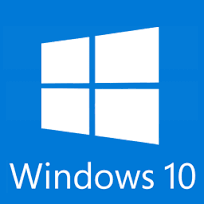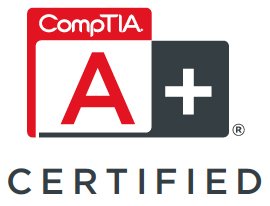Windows 10 is here!
 Many of you will be aware that Microsoft have now released the latest version of their Windows operating system this month, Windows 10. There are some great new features included, however you may want to wait, or at least be very careful, before you make the jump to Windows 10. Below are some things that you need to be aware of before you make the move.
Many of you will be aware that Microsoft have now released the latest version of their Windows operating system this month, Windows 10. There are some great new features included, however you may want to wait, or at least be very careful, before you make the jump to Windows 10. Below are some things that you need to be aware of before you make the move.
What's Great About Windows 10?
We have been running a preview of Windows 10 for several months now and can say that, overall, we really like it. While no computer program or operating system is perfect, Microsoft is getting a lot of things right with Windows 10. Here are some highlights:
- The return of the Start menu (well, sort of). Many people who experienced the previous operating system, Windows 8, were very put off by the Start screen, which highlighted "metro-style" apps and live tiles. However, in Windows 10 Microsoft bring back a more familiar style start menu in the lower left corner of the screen. It's a bit of a hybrid between the Windows 7 start menu and the Windows 8 app-driven start screen. However, it's highly customizable and makes it easy to get to most of the things that you need on a daily basis. Further if you happen to like the Windows 8 format, Microsoft gives users the choice of using the new start menu or the Windows 8 style start screen.
- Cortana, Microsoft's digital assistant. Cortana is a bit like Siri, Apple's voice-driven assistant. In Windows 10, though, Cortana will be available on every device - phone, tablet, desktop and laptop. You can essentially talk you your computer to perform searches or access information on your computer. Further, Cortana is a learning robot. That is, she will use what she knows about you and offer you increasingly relevant information when you ask for it. For example, you will be able to ask/tell Cortana, "find me pictures from last month," and she will present you with all pictures on your computer (or in OneDrive) from the past 30 days. Or you can say something like, "Is my flight going to leave on time today" and she will be able to give you a fairly accurate answer, based on current airline schedules.
- Microsoft Edge, the new web browser. A big change for users in Windows 10 will be that Internet Explorer will no longer be the default program to browse web pages on the Internet. Instead, Edge will be the new, streamlined browser experience. Edge will be very minimalist compared to Internet Explorer. There will be no toolbars, icons and settings to get in the way of viewing various web pages. However, Internet Explorer will still be installed in Windows 10 for users who must use it. Keep in mind, though, that you are free to install other web browsers, like Google Chrome or Firefox, if you wish.
- Virtual desktops - Users will be able to set up multiple desktops on their Windows 10 computers. For example, you can set up a desktop with all of your work-related icons and a separate desktop for all of your personal items. Another use might be to set up a different desktop for each user in your home, rather than separate accounts for each user.
- Free upgrade for the first year. For users who are running Windows 7 (service pack 1) or Windows 8.1, Windows 10 will be available as a free upgrade for the first year after it is released. However, if you don't upgrade within that first year, you will have to buy the operating system if you decide to upgrade. Recently Microsoft began pushing out this offer for the free upgrade by installing an update on Windows 7 & 8 machines. You may have seen a small Windows flag in the lower-right hand corner of your screen encouraging you to sign up for the free upgrade.
Should You Upgrade to Windows 10?
While we believe that Windows 10 will be successful for Microsoft, we would strongly caution you about upgrading your current computer, at least as soon as it becomes available. The initial release of Windows 10 may still have some bugs to work out which may cause issues on your computer. It may be better to wait a few months for these to be worked out. If you do decide that you want to upgrade, here are some things that are essential to do first:
- Make a complete backup of everything on your system. If something goes wrong during the upgrade process, you want to have a way to restore your computer to the way it was before the upgrade. The easiest way to do this is to use the built-in tools with Windows 7 or 8 to create a system image on an external hard drive.
- Install all of the latest updates on your operating system. It would be best to run Windows updates on your system prior to an upgrade to be sure that you have the latest security and system patches.
- Make sure that your current software and hardware is compatible with Windows 10. It may be that, though everything is running just fine on your current system, it may not run smoothly on Window 10. Microsoft may release a compatibility tool which you can run to test & see if your hardware and software will work with Windows 10, but they have not done so yet. I recommend that you install the latest device drivers for your computer (particularly video and network devices) prior to upgrading.
- Be sure to back up your data. In addition to a full system upgrade, it would be wise to create a separate copy of your critical data (documents, pictures, music, videos, etc.) prior to upgrading. Of course, you should be doing this on a regular basis anyway.
Safely upgrading from one version of Windows to another is a daunting task for most home computer users. If you feel that this is beyond your technical ability, and need help, we are now offering a special Windows 10 upgrade service. This service includes all of the above recommendations and precautions. For more information or to book an upgrade, call 01237 520999 or email [email protected] and we'll respond quickly.



